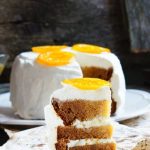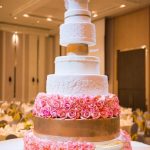Are you looking to take your cake decorating skills to the next level? Learn how to use fondant for cake decorating and create stunning, professional-looking designs with ease. Fondant is a versatile ingredient that can be used to create intricate decorations and designs on cakes, making it a popular choice among professional bakers and home decorators alike.
Fondant is a type of icing that is rolled out into a thin, smooth sheet and used to cover cakes or form decorative elements. It provides a clean, polished look and allows for endless possibilities when it comes to creating unique designs.
In this article, we will explore the different types of fondant available, essential tools and materials needed for working with fondant, step-by-step instructions on how to prepare a cake for fondant application, as well as tips and techniques for rolling out and applying fondant to your cake.
Whether you’re a beginner looking to learn the basics of using fondant or an experienced decorator hoping to refine your skills, this article will provide you with the knowledge and guidance needed to create beautiful fondant decorations for your cakes. Let’s dive into the world of fondant and unleash your creativity in cake decorating.
Types of Fondant
When it comes to using fondant for cake decorating, it’s important to familiarize yourself with the different types of fondant available and their unique properties. Here’s a breakdown of the various types of fondant that you can use:
- Rolled Fondant: This is the most commonly used type of fondant for cake decorating. It is pliable and easy to roll out, making it ideal for covering cakes and creating detailed decorations.
- Poured Fondant: Poured fondant has a creamy consistency and is often used for coating petit fours, pastries, and other confections. It creates a smooth, glossy finish and can be flavored or colored as desired.
- Marshmallow Fondant: Made from marshmallows, water, powdered sugar, and shortening, this type of fondant has a sweet flavor and is popular among home bakers. It is also more pliable than traditional rolled fondant.
Each type of fondant has its own advantages and uses, so it’s important to choose the right one based on your specific cake decorating needs.
When considering how to use fondant for cake decorating, it’s also worth noting that you can make your own rolled or marshmallow fondant at home if you prefer a homemade touch or have dietary restrictions. Making your own fondant allows you to customize the flavor and color to suit your preferences.
In summary, understanding the different types of fondant available will help you determine which one best suits your needs when decorating a cake. Whether you opt for rolled fondant for its versatility, poured fondant for its glossy finish, or marshmallow fondant for its homemade appeal, each type offers unique properties that can enhance your cake decorating experience.
Tools and Materials
When it comes to using fondant for cake decorating, having the right tools and materials is essential for achieving professional-looking results. Here is a comprehensive list of the essential items you will need to work with fondant:
- Rolling Pins: A non-stick rolling pin is ideal for rolling out fondant to the desired thickness without sticking. Additionally, a small roller or smoother can help smooth out any imperfections once the fondant is on the cake.
- Fondant Smoothers: These are handy tools for smoothing and shaping the fondant around the cake, ensuring a clean and polished finish.
- Fondant Mats: These mats provide a non-stick surface for rolling out fondant and can also be used to transfer the fondant onto the cake.
- Fondant Cutters: A variety of shaped cutters can be used to create decorations such as flowers, leaves, and other intricate details out of fondant.
- Edible Food Coloring: Gel or powdered food coloring specifically made for fondant is essential for tinting your fondant to achieve different colors.
- Cornstarch or Powdered Sugar: These can be used to dust your work surface when kneading and rolling out fondant to prevent sticking.
It is important to have these tools and materials on hand before starting any project involving fondant. With these items in your arsenal, you will be well-equipped to create beautifully decorated cakes using fondant.
Overall, having the right tools and materials is crucial in achieving successful results when using fondant for cake decorating. By investing in high-quality equipment and keeping these essential items on hand, you’ll be ready to tackle any creative project with confidence. Experimenting with different techniques and designs will allow you to fully explore how to use fondant for cake decorating and hone your skills as a decorator.
Preparing the Cake
Before you begin working with fondant, it’s crucial to properly prepare your cake to ensure a smooth and flawless finish. Here are step-by-step instructions on how to prepare a cake for fondant application:
1. Leveling: Start by ensuring that your cake layers are completely leveled. You can use a serrated knife or a cake leveler to trim off any domed tops and create an even surface. This step is essential for achieving a professional-looking result.
2. Filling: Once your cake layers are leveled, it’s time to fill them with your desired filling, whether it’s buttercream, fruit compote, or ganache. Use a piping bag or offset spatula to spread an even layer of filling on top of each cake layer, making sure not to overfill which can cause the layers to bulge.
3. Crumb Coating: After assembling and filling the cake, you’ll want to apply a thin layer of frosting all over the outside of the cake to trap any loose crumbs. This initial coat of frosting acts as a base for the fondant and helps achieve a clean and polished look.
With these steps completed, your cake is now ready for fondant application. Following these preparatory steps is essential for ensuring that the fondant adheres smoothly to the cake surface without any visible imperfections or bumps.
| Preparing the Cake | Step-by-Step Instructions |
|---|---|
| Leveling | Ensure cake layers are completely leveled using a serrated knife or cake leveler |
| Filling | Fill cakes with desired filling using piping bag or offset spatula |
| Crumb Coating | Apply thin layer of frosting all over outside of the cake to trap loose crumbs |
Rolling and Applying Fondant
Rolling Out Fondant
To start using fondant for cake decorating, it’s important to roll out the fondant to the desired thickness. Dust your work surface and rolling pin with powdered sugar or cornstarch to prevent sticking. Begin by kneading the fondant until it is smooth and pliable. Then, use a rolling pin to roll it out into a circle that is slightly larger than the diameter of your cake.
Applying Fondant to the Cake
Once you have rolled out the fondant, carefully drape it over the cake. Gently smooth the fondant against the sides of the cake, working from top to bottom to avoid air bubbles. Use a fondant smoother or your hands to gently press and smooth the fondant, ensuring a flawless finish.
Trimming and Shaping
After covering the entire cake with fondant, trim off any excess around the base using a sharp knife or pizza cutter. Use your hands or tools to shape and mold the fondant around rounded edges or intricate details on the cake. Take your time in this step to ensure a clean and professional look.
With these tips and techniques for rolling and applying fondant, you can achieve beautifully decorated cakes with a smooth and polished finish. Experiment with different colors and textures of fondant to create visually stunning designs that are sure to impress. Whether you’re a beginner or an experienced baker, mastering how to use fondant for cake decorating will open up endless possibilities for expressing your creativity in confectionery art.
Fondant Decorations
Fondant is a versatile and popular choice for cake decorating due to its ability to create intricate designs and decorations. One of the most common uses of fondant in cake decorating is creating various decorative elements such as flowers, bows, and figurines. In this section, we will explore creative ideas for using fondant to create these decorations, along with detailed instructions on shaping and coloring.
When it comes to using fondant for creating decorations, the possibilities are endless. One popular technique is making fondant flowers. To create these delicate floral decorations, start by kneading the fondant to make it pliable. Then, roll out the fondant to a thin and even layer before cutting out petal shapes using flower cutters or freehand with a small knife. Once the petals are cut, carefully shape them into flowers using your fingers or specialized tools.
In addition to flowers, fondant can also be used to make bows that add an elegant touch to cakes. To make a fondant bow, start by rolling out the fondant into a thin sheet before cutting long strips of equal width.
Then, fold and pinch the strips in the center to create the bow loops, and cut smaller strips to form the bow tails. Once assembled, allow the bow to dry and set before attaching it to the cake with edible glue or royal icing.
When shaping and coloring fondant decorations, it is essential to use high-quality food coloring gels or paste colors specifically designed for use with fondant. These concentrated colorings allow you to achieve vibrant colors without altering the consistency of the fondant. Experimenting with different shades and hues can bring your fondant decorations to life and add a personalized touch to your cake designs.
| Fondant Decoration | Instructions |
|---|---|
| Flowers | Roll out fondan’ts thin sheet; cut petal shapes; shape into flowers. |
| Bows | Roll out thin sheet; cut long strips; fold into loops; allow drying before attaching. |
| Coloring | Use high-quality food coloring gels or paste colors designed for use with fondant for vibrant colors without altering consistency. |
Troubleshooting
Cracking Fondant
One common issue that cake decorators may encounter when using fondant is cracking. This can happen for a variety of reasons, including the fondant being rolled too thin, the cake being too cold when the fondant is applied, or the fondant drying out too quickly.
To prevent cracking, be sure to roll the fondant to an even thickness, allow the cake to come to room temperature before applying the fondant, and work in a cool, but not overly dry environment. If cracking does occur, it can often be fixed by gently smoothing the cracks with your fingertips or a small amount of vegetable shortening.
Tearing Fondant
Tearing fondant can also present a challenge when decorating cakes. This issue commonly arises when lifting and draping the fondant over the cake, especially if it is stretched too thin or has uneven edges. To avoid tearing, ensure that the rolled fondant is large enough to cover the entire cake with a bit of excess for trimming.
Be gentle when lifting and draping over the cake, using a rolling pin to help transfer if needed. If tearing does occur, small tears can often be patched with additional pieces of fondant and smoothed over.
Preventing Issues With Fondant
There are several steps you can take to prevent issues like cracking or tearing when working with fondant for cake decorating. First and foremost, be sure to knead and roll out the fondant evenly so that it is pliable and smooth.
It’s also essential to properly prepare your cake by ensuring that it is level and smoothly iced with a thin layer of buttercream before applying the fondant. Lastly, store any unused rolled fondant in an airtight container at room temperature to prevent drying out.
By following these troubleshooting tips and preventive measures, you can minimize common issues that arise when working with fondant for cake decorating while creating beautifully decorated confections that will impress any crowd.
Finishing Touches
When it comes to adding the finishing touches to a fondant-decorated cake, there are several creative options to consider. One popular technique is painting on fondant, which allows for intricate designs and details to be added to the cake. Using food-safe edible paints and brushes, decorators can bring their designs to life with vibrant colors and beautiful patterns. Whether it’s delicate floral patterns or realistic textures, painting on fondant offers endless possibilities for customizing cakes.
Another method for adding final touches to fondant-decorated cakes is airbrushing. An airbrush tool allows decorators to create smooth gradients of color, subtle shading, and striking metallic effects on the cake’s surface. This technique is perfect for achieving a professional-looking finish and adding dimension to fondant decorations. From ombre effects to bold splashes of color, airbrushing can elevate the overall look of a fondant-decorated cake with ease.
In addition to painting and airbrushing, decorators can also enhance fondant decorations by adding edible embellishments such as sugar pearls, edible glitter, or decorative dragees. These small details can add a touch of glamour and elegance to the cake, making it stand out as a stunning centerpiece for any occasion. By carefully selecting and placing these embellishments, decorators can elevate the visual appeal of their fondant creations and truly make them shine on the dessert table.
Overall, when it comes to finishing touches for fondant-decorated cakes, painting, airbrushing, and adding edible embellishments are wonderful ways to personalize and enhance the design of a cake. By incorporating these techniques into their decorating process, aspiring bakers and experienced decorators alike can create show-stopping cakes that are as beautiful as they are delicious.
Would you like an additional section?
Conclusion
In conclusion, fondant is a versatile and popular choice for cake decorating due to its smooth, polished finish that allows for the creation of intricate designs. Whether using rolled fondant, poured fondant, or marshmallow fondant, there are numerous possibilities for bringing creativity to cakes with this medium. With the right tools and materials, such as rolling pins, fondant smoothers, and fondant mats, working with fondant can be a fun and rewarding experience.
From preparing the cake for fondant application to troubleshooting common issues that may arise during the process, this article has provided a comprehensive guide on how to use fondant for cake decorating. By following the step-by-step instructions and creative ideas for using fondant to create decorations like flowers, bows, and figurines, readers can expand their skills in cake decorating.
In undertaking these techniques with confidence and patience, individuals can achieve stunning results in their cake designs. Although it may take some practice to master the art of using fondant for cake decorating successfully, the potential for creating show-stopping confections is well worth the effort. I encourage readers to embrace their creativity and explore the exciting possibilities that await them when using fondant for cake decorating.
Frequently Asked Questions
How Do You Use Fondant for Beginners?
Using fondant for beginners involves preparing the cake by covering it with a thin layer of buttercream or ganache to create a smooth surface for the fondant. Kneading and rolling out the fondant to the desired thickness, then carefully draping it over the cake and smoothing out any wrinkles or air bubbles is essential.
Can You Put Fondant Directly on a Cake?
Yes, you can put fondant directly on a cake. However, it is important to ensure that the cake has been properly prepared with a base layer of buttercream or ganache to help the fondant adhere and create a smooth surface.
How Do You Stick Fondant to a Cake?
To stick fondant to a cake, you can use a small amount of water, piping gel, or edible glue applied with a brush to the areas where the fondant will be placed. Pressing gently on the fondant once it’s in position will help it adhere to the cake.

Welcome to my blog about home and family. This blog is a place where I will share my thoughts, ideas, and experiences related to these important topics. I am a stay-at-home mom with two young children. I hope you enjoy reading it! and may find some helpful tips and ideas that will make your home and family life even better!





